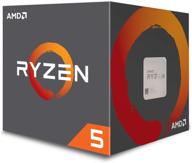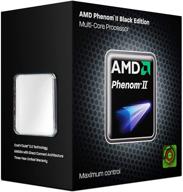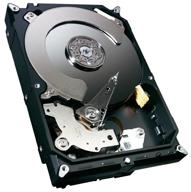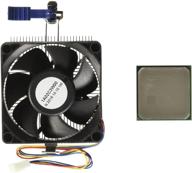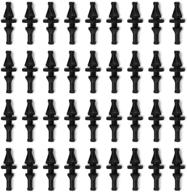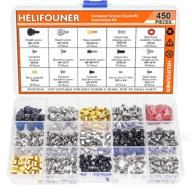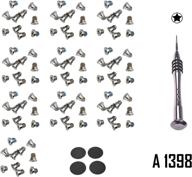- Cold, productive.
- Terrible performance
- Very high temperatures
- While working, the speed is just lightning fast.
- Burned out, that's all
- On duty, I dealt with AMD Ryzen processors of all generations, and despite their advantages: long-playing socket, number of cores, loyal pricing policy of the manufacturer, thermal interface, and many others. I always chose intel for myself. Cause? Stable and predictable work in all, without exception, applications, coupled with maximum performance in games. Yes, in certain professional applications they lagged behind due to the smaller number of cores, but not so much as to sacrifice speed in everyday, multimedia tasks. However, AMD did not stand still, and if the first two generations caused me nothing more than bewilderment (the products were frankly raw), then after working with the third Ryzen, I was satisfied with the processors. However, there was no desire to purchase one for myself. But with the release of Zen 3, the situation changed and I bought the 5900x. Impression: Quick. Faster than 9900K@5Ghz with 4400@17 memory, which is what I switched from to 5900x. Moreover, it is faster everywhere, starting with the banal installation of Windows, unpacking archives and installing programs, ending with games and a software package from Adobe, where Intel has always been ahead. There is no need to use monitoring and benchmarks to catch the difference. Visible to the eye! There is no need to talk about 12 cores and what they are capable of, and so it is clear. In games, which I did not expect at all, smoothness was added. And those who are afraid to buy AMD because of the high latency of the memory subsystem have nothing to worry about. I play Quake, Quake Champions and COD: MW 2022 on a 240hz monitor and I can say the responsiveness is great. Feels even faster than on the intel system. FPS sky-high. At medium and low settings, everything rests on the 2080 Super.
- Heat dissipation and unpolished BIOS for motherboards. Many people experience problems with falling off USB ports (can be cured by disabling the Global C-States option in the BIOS) and errors when raising the FCLK above 1600 MHz. But all this will soon be corrected by the new AGESA.
- Excellent single-threaded and multi-threaded performance. I pre-rolled the firmware with support for Ryzen 5 on my Aorus Elite B450 (I don’t recommend, by the way, my mother is quite picky about memory and timings), and that’s all, no problems at all. Thanks to two processor units, the normal (doubled) speed of writing to memory has finally worked here.
- Nothing, everything is fine. Unless it's all expensive with the current dollar exchange rate. I took it about 2 months ago for the same 48.5k, for which it is being sold now.
- Good advertising based on synthetic tests.
- Poor compatibility and general sophistication of the entire AMD architecture - processor, motherboard, etc. Prepare for hardware issues and blue screens. Unstable work. Hardware incompatibility.
- Everything (compared to 2950x)
- Didn't notice
- Excellent performance
- Not a drawback, but the harsh reality of all new processors (from amd and intel) - you need GOOD cooling.
- Fast processor and it shows in every aspect of usage.
- It is heated, the problem with heat dissipation is real. Not critical, but the reviews don't lie. Overprice price.
- - Good per-core performance, not the best anymore, but decent for the money - Price/core ratio - Pretty low heat dissipation, with the PBO setting, it is cooled without problems by something of the Gammaxx 400 level, of course it is better to set good cooling, but even so 4.5 keeps all cores at 100 load for half a day. The temperature is 76-80. In games 4.8-4.9. - Works on elderly X470 Taichi
- - AMD legs - does not fully work on older chipsets
- Powerful enough if it works properly.
- Doesn't work well.
- - performance in photography applications (Adobe Lightroom in particular) - high clock frequency (yes 4.9 GHz) with a single-threaded load - moderate power consumption during fixed overclocking - compatibility with old motherboards (great choice for upgrading an old system) - easy overclocking and tuning - excellent memory overclocking
- - a shameful kit (sticker, Carl! ) for the box version of the pre-top processor - one of the CCXs is more likely to be worse than the second - the work of the bus turns the system unit into a buzzing firebox, nervously blazing from the launch of the browser - of course it is adjusted to an acceptable level, but why not optimize the work of the CO immediately when developing the motherboard firmware
- Excellent performance, able to encode 10 Mbit Slow preset online with virtually no frame loss. Gaming and work performance is excellent, especially after memory tuning. Compared to my past 2700X, the gain is huge in all areas of application.
- Quite hot (although it doesn’t really bother the user, except for the fact that you need to set the fans to work correctly so that they don’t howl), due to the size of the chiplets, after all, the 7 nm manufacturing process, it is difficult to remove heat from this surface. In super-heavy tasks (encoding, rendering) it heats up to 83-85 degrees under air cooling BeQuiet Dark Rock 4 (rather expensive cooler), although they say some DEEPCOOL RED HAT will be no worse and cheaper.
- The perfect balance of price/performance
- not found
- Fast, enough cores, more than enough for powerful games and a powerful graphics card. Bought for a future upgrade.
- Very hot, in my OEM sample, the voltage reached 1.49, maybe more, because. it was not possible to set up monitoring.
- cold and dragging
- stove out of the box
- Nothing not to like
- The high price of motherboards for this processor and the percentage itself is also not cheap, and of course there are problems with the BIOS.
- -Ultimate victory over lagging in single thread. -Less sensitivity to memory relative to previous generations. -Sea cache. -Support PCI-e 4.0. -Useful new features for overclocking and everything related.
- -Very hot when overclocking or boosting PBO2. - Pricing policy of the company.
- Cores, threads, performance.
- If you are not careful when inserting into the board, you can bend the legs. The weakest point. With a new socket, this problem will be solved :)






